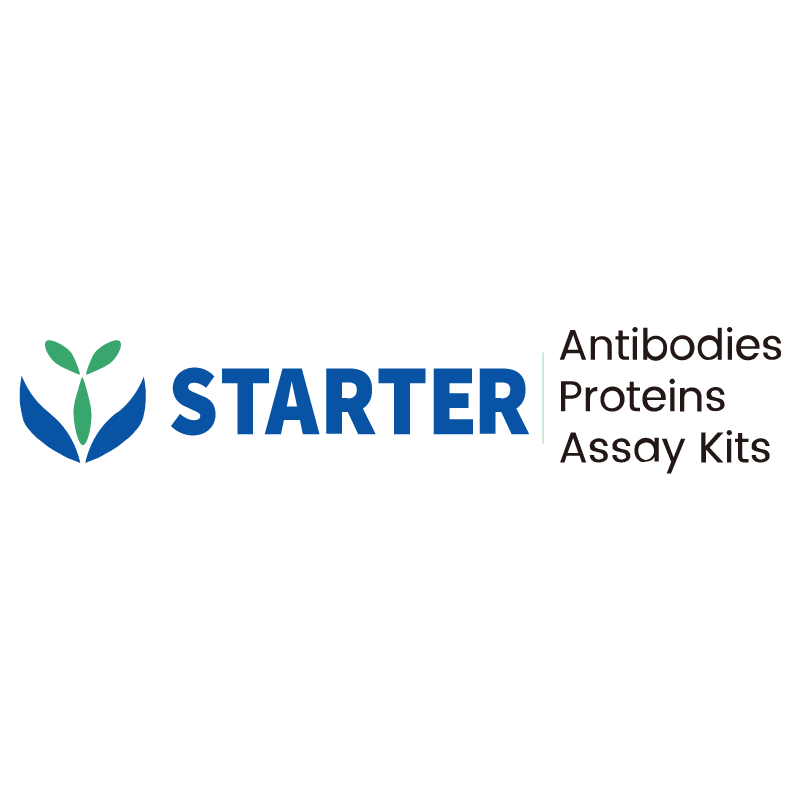WB result of PIAS1 Recombinant Rabbit mAb
Primary antibody: PIAS1 Recombinant Rabbit mAb at 1/1000 dilution
Lane 1: HeLa whole cell lysate 20 µg
Lane 2: SH-SY5Y whole cell lysate 20 µg
Secondary antibody: Goat Anti-Rabbit IgG, (H+L), HRP conjugated at 1/10000 dilution Predicted MW: 72 kDa
Observed MW: 72 kDa
Product Details
Product Details
Product Specification
| Host | Rabbit |
| Antigen | PIAS1 |
| Synonyms | E3 SUMO-protein ligase PIAS1; DEAD/H box-binding protein 1; E3 SUMO-protein transferase PIAS1; Gu-binding protein (GBP); Protein inhibitor of activated STAT protein 1; RNA helicase II-binding protein; DDXBP1 |
| Immunogen | Synthetic Peptide |
| Location | Nucleus |
| Accession | O75925 |
| Clone Number | S-1430-7 |
| Antibody Type | Recombinant mAb |
| Isotype | IgG |
| Application | WB, IHC-P, ICC |
| Reactivity | Hu, Ms, Rt |
| Positive Sample | HeLa, SH-SY5Y |
| Purification | Protein A |
| Concentration | 0.5 mg/ml |
| Conjugation | Unconjugated |
| Physical Appearance | Liquid |
| Storage Buffer | PBS, 40% Glycerol, 0.05% BSA, 0.03% Proclin 300 |
| Stability & Storage | 12 months from date of receipt / reconstitution, -20 °C as supplied |
Dilution
| application | dilution | species |
| WB | 1:1000 | Hu |
| IHC-P | 1:250 | Hu, Ms, Rt |
| ICC | 1:500 | Hu |
Background
PIAS1 (Protein Inhibitor of Activated STAT1) is a protein that belongs to the PIAS (Protein Inhibitors of Activated STAT) family. PIAS1 was initially identified as an inhibitor of STAT1, where it interacts with activated STAT1 to form a complex. This interaction prevents STAT1 dimers from binding to DNA by masking their functional domains, thereby inhibiting transcription. In transcriptional regulation, PIAS1 exerts inhibitory effects on transcription factors such as STAT1 and NF-κB by blocking their DNA-binding capabilities without relying on its own SUMOylation or the SUMO E3 ligase activity of PIAS. PIAS1 also interacts with non-transcription factors, such as focal adhesion kinase (FAK), leading to the SUMOylation of FAK, which results in its autophosphorylation. PIAS1 interacts with the tumor suppressor protein p73, a member of the p53 family, leading to the SUMO modification of p73 and inhibiting its transcriptional activity. This interaction decreases the expression of p21, resulting in a reduced proportion of cells in the G1 phase and promoting cell cycle progression. The expression of PIAS1 is significantly associated with the differentiation status of tumor cells in hepatocellular carcinoma and colorectal cancer, where lower expression correlates with poorer differentiation.
Picture
Picture
Western Blot
Immunohistochemistry
IHC shows positive staining in paraffin-embedded human colon. Anti-PIAS1 antibody was used at 1/250 dilution, followed by a HRP Polymer for Mouse & Rabbit IgG (ready to use). Counterstained with hematoxylin. Heat mediated antigen retrieval with Tris/EDTA buffer pH9.0 was performed before commencing with IHC staining protocol.
IHC shows positive staining in paraffin-embedded human colon cancer. Anti-PIAS1 antibody was used at 1/250 dilution, followed by a HRP Polymer for Mouse & Rabbit IgG (ready to use). Counterstained with hematoxylin. Heat mediated antigen retrieval with Tris/EDTA buffer pH9.0 was performed before commencing with IHC staining protocol.
IHC shows positive staining in paraffin-embedded human tonsil. Anti-PIAS1 antibody was used at 1/250 dilution, followed by a HRP Polymer for Mouse & Rabbit IgG (ready to use). Counterstained with hematoxylin. Heat mediated antigen retrieval with Tris/EDTA buffer pH9.0 was performed before commencing with IHC staining protocol.
IHC shows positive staining in paraffin-embedded human lung squamous cell carcinoma. Anti-PIAS1 antibody was used at 1/250 dilution, followed by a HRP Polymer for Mouse & Rabbit IgG (ready to use). Counterstained with hematoxylin. Heat mediated antigen retrieval with Tris/EDTA buffer pH9.0 was performed before commencing with IHC staining protocol.
IHC shows positive staining in paraffin-embedded mouse colon. Anti-PIAS1 antibody was used at 1/250 dilution, followed by a HRP Polymer for Mouse & Rabbit IgG (ready to use). Counterstained with hematoxylin. Heat mediated antigen retrieval with Tris/EDTA buffer pH9.0 was performed before commencing with IHC staining protocol.
IHC shows positive staining in paraffin-embedded rat kidney. Anti-PIAS1 antibody was used at 1/250 dilution, followed by a HRP Polymer for Mouse & Rabbit IgG (ready to use). Counterstained with hematoxylin. Heat mediated antigen retrieval with Tris/EDTA buffer pH9.0 was performed before commencing with IHC staining protocol.
Immunocytochemistry
ICC shows positive staining in HeLa cells. Anti- PIAS1 antibody was used at 1/500 dilution (Green) and incubated overnight at 4°C. Goat polyclonal Antibody to Rabbit IgG - H&L (Alexa Fluor® 488) was used as secondary antibody at 1/1000 dilution. The cells were fixed with 100% ice-cold methanol and permeabilized with 0.1% PBS-Triton X-100. Nuclei were counterstained with DAPI (Blue). Counterstain with tubulin (Red).


